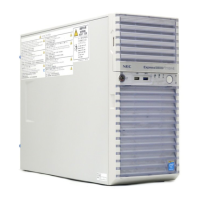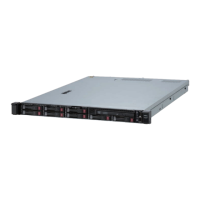(b) To call a child configuration file into the current file
1. On the Other Configurations page, select the check box next to the configuration file(s) you want to call
into the current file.
2. Check the setting at the bottom of the page and verify that you have selected the correct configuration
files.
3. When you are finished editing the current configuration, save the configuration file.
To remove a child configuration file from the current configuration, clear the check box next to that
configuration file. (If you need to remove a child configuration from another configuration file, you must
edit that configuration file separately.)
When you have finished specifying child configuration files, you can click Next to proceed with the next
configuration step.
(5) Selecting Application Services to Control
Use the Application Services page to select the application services you want the Active Upgrade Console to
automatically stop and restart during the upgrade process.
If you select a service on the Application Services page, the Active Upgrade Console controls the service as
follows:
• When the system is split, the console stops the service on the Upgrade Side, saves its current StartupType,
and changes the Startup Type to Disabled. This helps to prevent application errors associated with the
Upgrade Side losing access to data disks and the network while the system is split.
• When the system is merged, the console stops the service on the Production Side, restores the previous
Startup Type for the service on the Upgrade Side, and starts the service on the Upgrade Side. This ensures
continuous availability of the service, enables comprehensive testing on the Upgrade Side, and prevents
any conflicts associated with two instances of a service running at the same time.
• When an upgrade is aborted, and if the system is in merge mode, the console shuts down the Upgrade Side
to stop the service automatically. The console automatically restarts the Production Side based on its default
Startup Type. This restores the system to its previous, fault-tolerant state.
Important
• Standard operating system services do not require control during the Active
Upgrade process. Select only services that are related to your applications (such
as Exchange Server or SQL Server).
• The Active Upgrade Consol never changes the default Startup Type for a service
on the Production Side. Maintaining the default Startup Type on the Production
Side ensures that a service will always be able to restart on the Production Side
if the upgrade process is aborted or failed.
Each service on Application Services page has a checkbox to indicate three states as shown below:
Selection of Application Services
Check Box State Description
Cleared Not selected.
Checked Selected in the current configuration file.
Checked
(Gray)
Selected in a child configuration file. If applicable, you can
edit the child configuration to deselect it.

